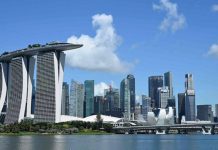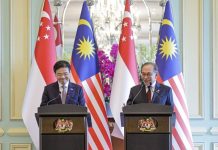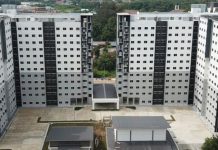Hong Kong economy shrinks for first time in a decade
The Hong Kong economy’s first recession in a decade deepened in the fourth quarter of 2019, weighed down by anti-government protests and the US-China trade war. Last year was the worst for Hong Kong’s growth since 2009, when the financial hub was hit hard by the global financial crash.
Official figures released on Monday showed Hong Kong’s gross domestic product shrank 1.2 per cent on-year for 2019. The fourth quarter clocked a 2.9 per cent contraction, the third straight quarter of declines. “The local social incidents with violence during the quarter took a further heavy toll on economic sentiment as well as consumption and tourism related activities,” the government said in a statement. “Total exports of goods continued to decline amid the difficult external environment, though at a somewhat narrower rate,” it added.
The crisis was initially sparked by the trade war between Beijing and Washington, hitting the export-heavy economy. But the hard times were made worse by months of seething and often violent protests seeking greater democracy and police accountability. Analysts predict an even worse first quarter in 2020, as measures to restrict cross-border mobility to fight the spread of a new coronavirus, which originated in mainland China deal a further blow to tourism, retail and other business.
“The coronavirus is grabbing the headlines, but the protests haven’t gone away,” said Iris Pang, Greater China economist at ING, who expects the economy to contract by 4.5 per cent this year and return to mild growth in 2021 “if the virus is contained”. “Retail, catering, tourism, mass transportation are all suffering.”
ANZ analysts predicted a 1.4 percentage point negative impact on Hong Kong’s first quarter gross domestic product from the effects of the virus, making it the worst hit region in Asia outside mainland China. Capital Economics expects the virus to shave off 2 percentage points off Hong Kong’s first quarter growth.
China considers lowering 2020 growth expectations
Meanwhile, China considers lowering its 2020 growth expectations as a result of the cononavirus. The annual growth target is typically unveiled in March. Economists had expected China would aim for output growth of “around 6%” this year after seeking a range of 6% to 6.5% in 2019. Officials are also considering further measures to shore up the economy, including increasing the planned cap on the budget deficit-to-GDP ratio and selling more special government bonds, said the people, who asked not to be identified discussing the private talks. Final decisions haven’t been made, they added. Any changes to the growth target would have to be approved by top leaders of the Communist Party.
China’s central bank took its first concrete steps to cushion the economy and plunging markets from the blow of the virus, providing short-term funding to banks and cutting the interest rate it charges for the money. The People’s Bank of China added a net 150 billion yuan of funds on Monday. The cash injection was part of a raft of supportive measures announced over the weekend to soften a market sell-off and help firms affected by the disease outbreak and extended holiday.
























